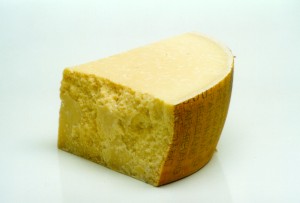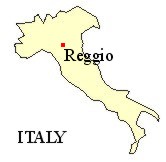
|
|
|||||
The most famous of all Italian cheeses, this name has been rejoiced around the world for hundreds of years as one of the finest cheeses of all. Parmigiano Reggiano is one of the Formagio di Grana cheeses, so named because of their grainy texture. These cheeses have a long history which goes back to before the age of the Roman Empire. Parmesan itself was developed more recently, and it was first made in the town of Bibbiano near Piacenza. This town originally belonged to the province of Parma, hence the name. By 1364 it already had a high reputation. The main production area was the region south of the river Po. Other cheeses were made in regions North of the Po, among them Grana Padano. In 1955 the two names Parmigiano Reggiano and Grana Padano were protected, to ensure consistent quality of cheese. The name Parmesan, however is an Anglicised version which encompasses many types of cheese, including the dry flaky tasteless powder that is now widely available. The making of Parmigiano Reggiano is strictly controlled. It can only be made between 1 April to 11 November with milk from the 'zona typica' (Parma, Reggio, Emilia, Modena, Mantua, Po and Bologna.). Even the diet of the cows which produce the milk is strictly restricted to fresh grass, hay or alfalfa. The process of making Parmigiano Reggiano starts with the mixing of unpasteurised morning and evening milk, which is partly skimmed and mixed in huge copper cauldrons. The starter is then added and the temperature gradually raised to 33°C. Once at this critical temperature, rennet is added to the milk, which coagulates in 15 minutes. The resulting curds are broken up with a spino (sharp rod) into tiny grains, which remain in the whey and are cooked at 55°C. Once settled to the bottom of the cauldrons, the curds are scooped out in a cheese cloth and pressed in a mould known as fascera. They are left for several days and then salted in brine for 3 weeks, after which they are matured for up to 4 years. The cheese can be categorised according to maturity, and at the Teddington Cheese we sell the vecchio or old cheese, which has been matured for nearly 2 years. We believe that at this stage Parmigiano Reggiano is at its finest, with a not too dry texture, but with the flavour fully developed. Parmigiano Reggiano is of course renowned as a grating cheese, for which it is in a league of its own, but the decadent delight of nibbling on a whole chunk is an experience not to be missed, as the cheese gently melts in the mouth. It is also great in desserts accompanied with fruit such as pears. The cheese comes in huge 36 kilogram rounds, approximately 30cm high with flat top and bottom, and a bulging middle. The rind has been described as 'bullet proof' as it is extremely hard, but surprisingly it can still be used in cooking to add flavour to soups etc... Parmigiano Reggiano is easily distinguished even when cut, with every centimetre of the rind covered by the stamp of its name. For such a deliciously rich cheese the fat content is surprisingly low at only 32%. Click here or press your 'Back' button to return |
|
|||||
| All articles © www.teddingtoncheese.co.uk | ||||||
